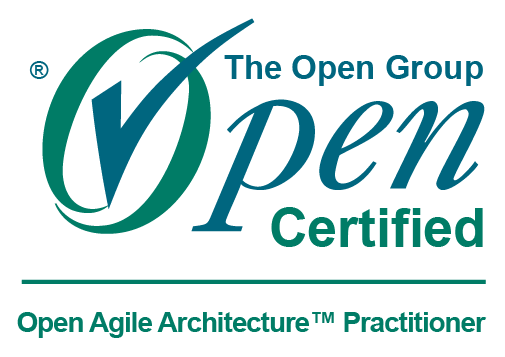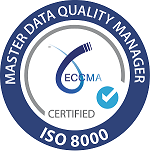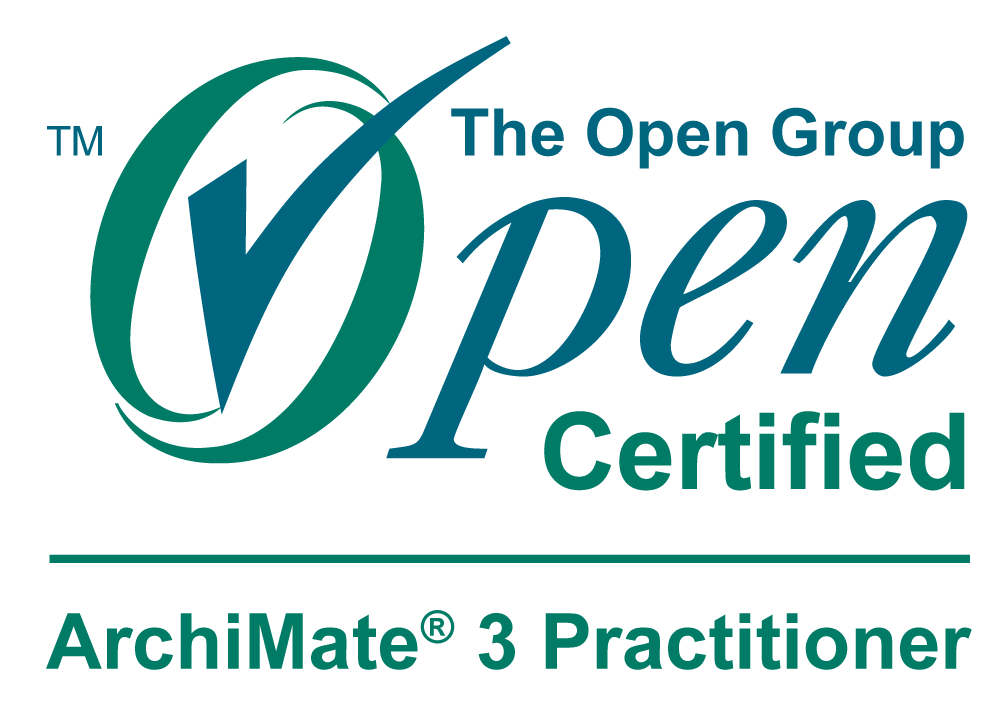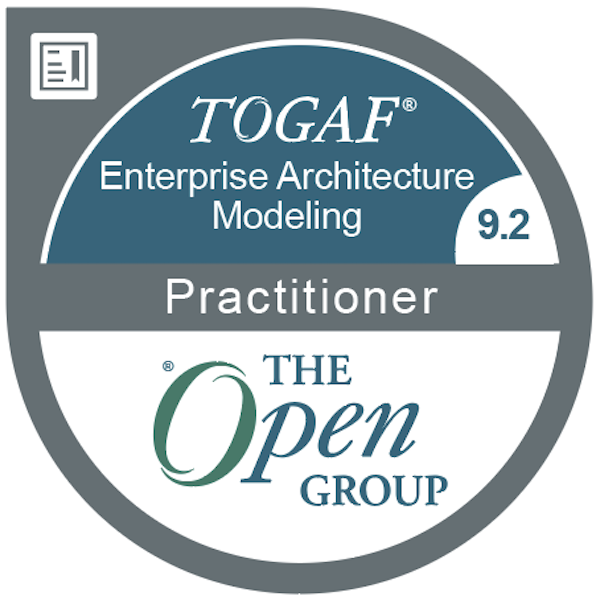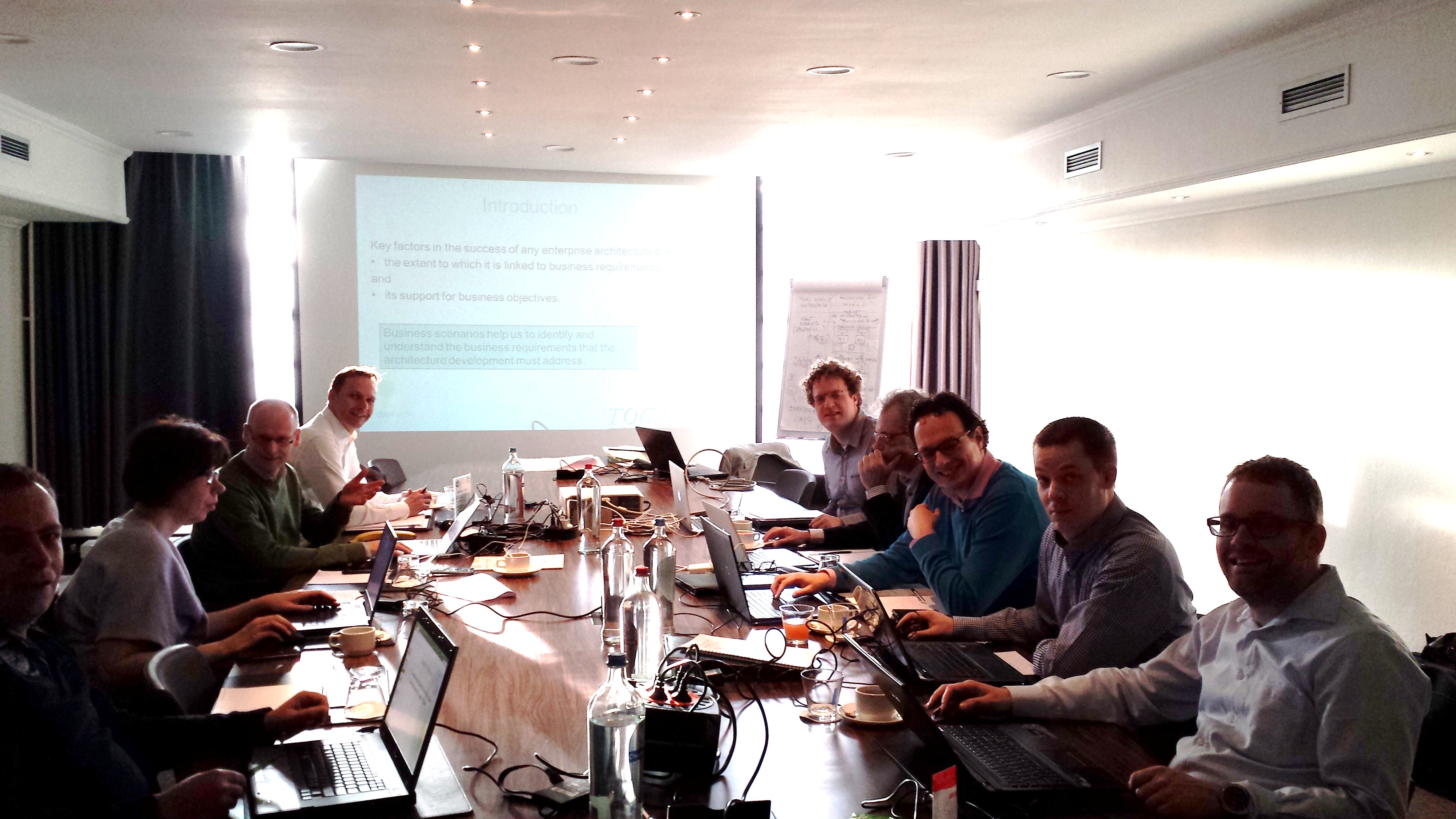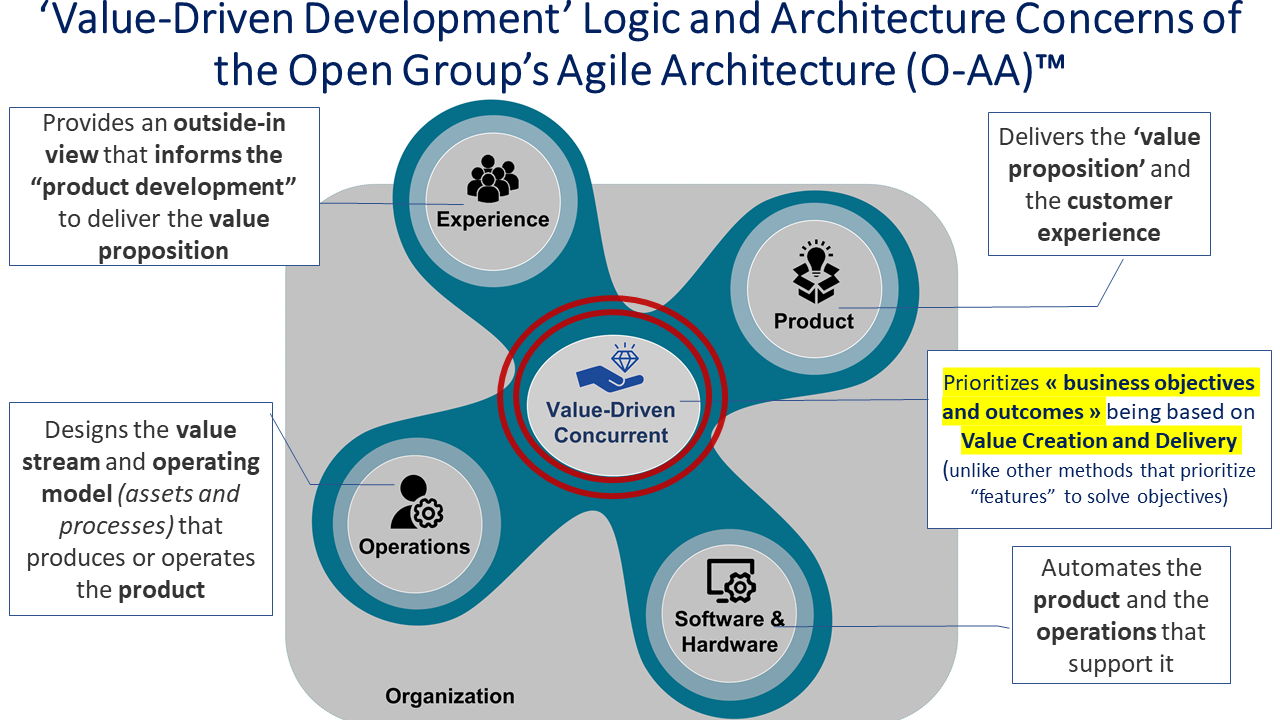Enabling Data-Driven Agile Enterprise thru O-AA & TOGAF ADM
Making the Agile Enterprise "Sense the Change" and "Act upon it Rapidly and Decisively"
The Open Group has recently issued the Open Agile Architecture (O-AA) standard that aims to create Value in an Agile way by aligning Products, Services and Operations to Enterprise Strategies and Experience Design of Users and Customers.
O-AA (TM) defines the "Dual Transformation" that concerns the Agile and Digital Enterprise by the following statements :
"The Agile enterprise senses changes in its environment early and acts upon them decisively and rapidly".
"The digital enterprise is about applying digital technology to adapt or change:
• The strategy of the enterprise, the product or service it markets,
• The experience it delivers to customers, employees and other stakeholders,
• Its operating system" - processes and assets.
To enable such an agile and digital alignment to deliver the best products and services, O-AA is centred around the concept of “Value” instead of ‘Requirement based features’ as depicted below.
The O-AA framework can efficiently be used to enable organizations to strategically create value through enhanced products and services then adjust them continuously based on feedbacks captured from different drivers such as customers, users, stakeholders and all other drivers.
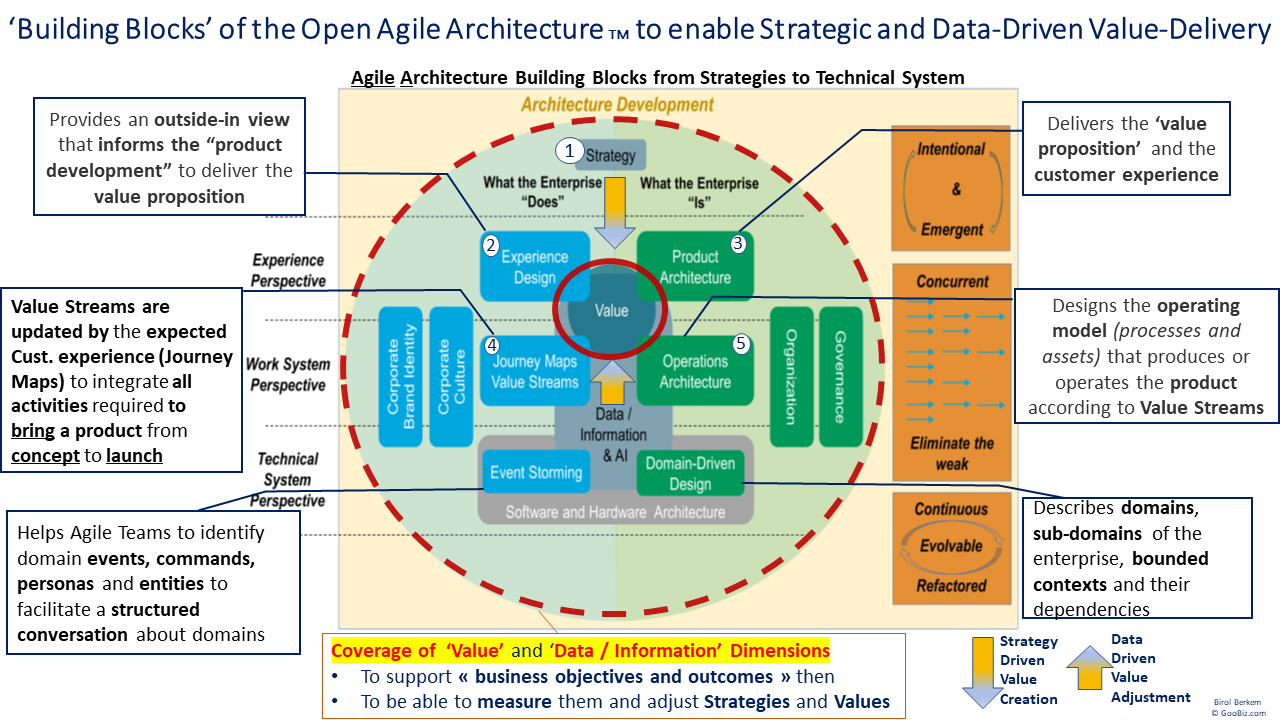
Figure 1 - Building Blocks of the O-AA from Strategy (1), Experience Design (2), Product Architecture (3), Journey Maps (4), Operations Architecture(5) to Technical System.
However O-AA does not provide a detailed explanation on how to sense the changes and react upon them decisively.
Indeed, to feed the Strategy with the right data to 'plan value creation and its delivery', we have just a bit extended in the above figure the boundary of 'Data' and Value' entities to cover the Strategy and other building blocks such as Organization and Governance (cf. dashed line in red in the figure).
This enables the Strategy-Driven Value Creation and Data-Driven Value Adjustment respectively materialized by two small arrows added to figure 1.
STRUCTURING THE AGILE and DIGITAL ENTREPRISE
To enable the "Agile and Digital Enterprise" using such a Strategic and Data-Driven Value Management approach, the corresponding building blocks need to be made actionable by establishing appropriate links among them using a modeling language such as ArchiMate through TOGAF ADM phases.
The figure below depicts on the left the TOGAF ADM cycle that implement O-AA building blocks through its phases. These phases will be used to structure the Agile Enterprise to "sense change in its environment early and acts upon them decisively".
Figure 2- From O-AA building blocks on the left to Sense Changing and Decisively Reacting Organization framework depicted on the right corner through the Business Model Canvas (BMC).
Details are provided in Figure 3.
ORCHESTRATING THE 'VALUE CREATION and DELIVERY'
To concretize the "Change Sensing and Decisively Reacting Agile Organization", a holistic approach enabled by two bridges on the Business Model Canvas reveals necessary as depicted on figure 3 below :
- a first bridge from External Drivers located on the top left (that fuel the change to be assessed) to set goals (# 1) and corresponding values to deliver based on Customer Experience (#2), the Product Architecture to realize these values (# 3), the Customer Journey that "assesses value delivery" (# 4) from the user/customer perspective then all processes and resources including customer touchpoints (small circles in blue) that support Customer Interactions and Distribution Channels (# 5)
then
- a second bridge from Internal Drivers that collect data from all innovation dimensions as well as data collected from steps of the Customer Journey including IoT systems to assist decision-makers in the adjustment of strategies and values.
The second bridge is symbolized by the bottom-up arrow and other internal arrows that join the 'data assessment icon on the top left.
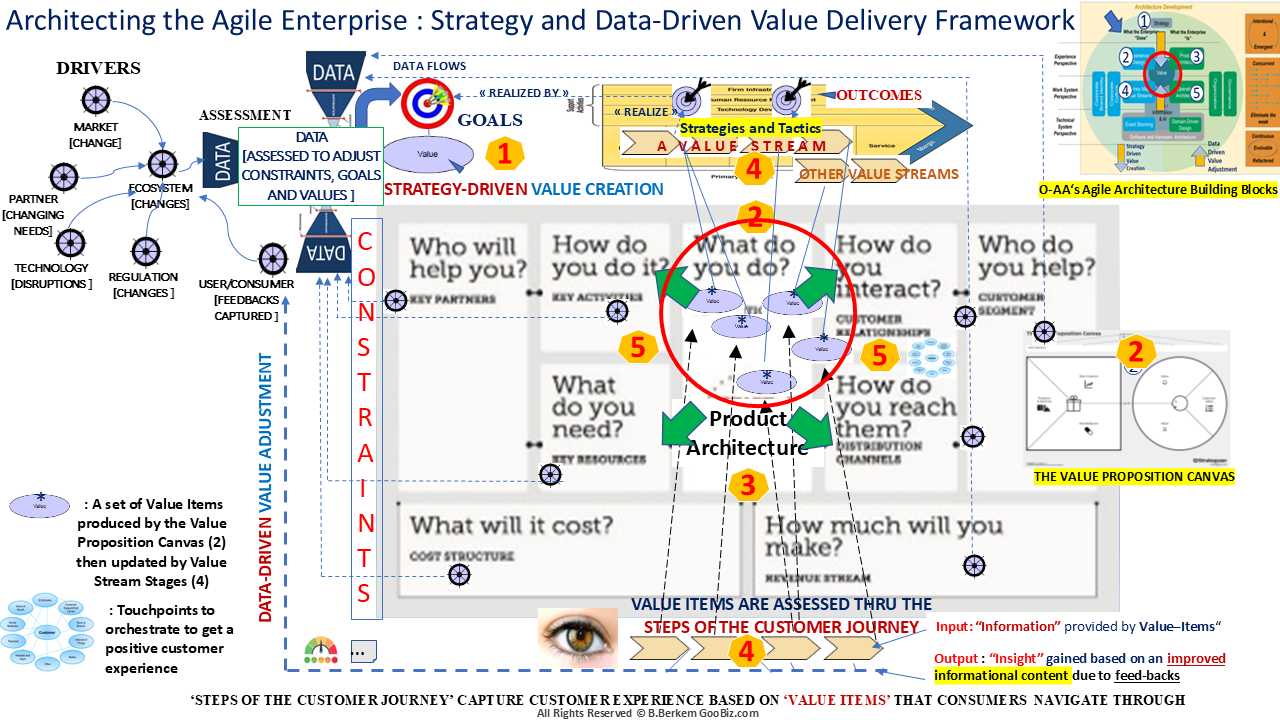

Figure 3 - A high-level description of O-AA Building Blocks to enable Strategic Value Creation and Value Adjustment being based on Data Captured through Drivers
Indeed, to enable the " Data-Driven Strategic Value Adjustment", data feedbacks need to be captured from all innovation dimensions (entities that are monitored in each partition of the Business Model Canvas such as Value Items in the middle, Key Activities and Resources on the left and Touchpoints and Distribution Channels on the right).
O-AA's AGILE ORGANIZATION TEAMS TAXONOMY
In the Agile Organization of O-AA, Stream-Aligned Agile Teams are aligned on Outcomes. They are supported by Competency Teams that are experts in some business or technical areas as indicated below.
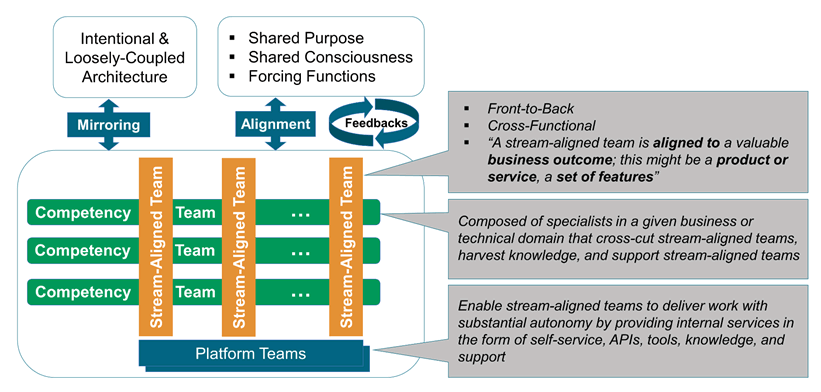
With such an expertise, competency teams are able to assess changes captured on the innovation dimensions provided by the partitions of figure 3 to make related decisions being guided by 'outcome' of the Stream-Aligned Team they support.
ACTIONING THE STRATEGIC and DATA-DRIVEN ORGANIZATION FOR AN ENHANCED CUSTOMER EXPERIENCE
To enable an enhanced 'Customer Experience' by continuously adjusting 'Value Creation' through Products and Services, a set of minimal #archimate artifacts are presented on #togaf 10 ADM Phases below.
Each artifact is presented by the "identifier" of the corresponding ADM phase in which it is first introduced (cf. figure below).
Figure 4 - Essential Artifacts to support Strategic and Data-Driven Value-Delivery through the phases of TOGAF ADM
Preliminary Phase (P) : Define the Enterprise within its disruptive environment based on Drivers and their assessments, goal settings, value propositions to evolve the organization into digital product offerings and the customer journey mapping for its delivery (cf. P) icons in the above figure.
Phase A : Develop a high-level vision of the business value and capabilities to be delivered by the Enterprise Architecture using Strategy and Motivation models.
As shown in the above figure, one of the important artifacts elaborated in phase A is the definition of the target Value Proposition Canvas depicted on the upper right. In addition, the Value Proposition Canvas helps to determine Values that need to be offered on the basis of gains and pains of users/customers while they realize their job-to-be-done.
Indeed in O-AA, Strategy is seen as a set of strategic assumptions that need to be experimentally verified.
In order to precisely determine in which step of the Customer Journey (CJ) a Value-Item should be offered, we need to consider expectations of users and customers in CJ steps and formulate them using "desired states" (cf. figure 5.1 below).
Phase A/B : In phases A and B of the ADM, iteratively we make use of 'Outcome Aligned Strategies' to sequence Value-Items that are determined in phase A then configure Stages of Value Streams to enhance customer's perception of the worth of the Product and services (the latter are designed in details thru ADM phases C and D below).
In such an alignment, Value-Items expressed with the format of the Business Entities in Desired States such as Visitor [Suggested to benefit from the Campaign] serve to align Roles that participate to the Steps of the Customer Journey (CJ).
The figure below shows an example of such an end-to-end Strategic alignment for a Websale company that aims to "Turn its visitors into buyers". Outcomes, Value-Items and the Roles in the Steps of Customer Journey are all expressed in the format of 'Desired States' to prepare the ground for the experimental verification of Strategic Assumptions.
.png)
Figure 5.1 - From Strategic Outcomes to Steps of the Customer Journey where ' Roles' are appropriately aligned to Value Items that need to be delivered
The Roles depicted in the bottom part of the figure will also be used in the description of User Stories to deliver the corresponding Values at run-time (cf. figure 6 in Phase G below).
In its Axiom 12 - namely 'Organization Mirroring Architecture', O-AA states that "Agile Architecture shall structure Agile teams in a way that maps the system’s intentional architecture".
This is about shaping the enterprise’s organization in a way that mirrors its intentional product and software architectures.
In this perspective, the figure below represents the Intentional Architecture aligned to the goal 'Turning Visitors into buyers' and its derived services segmentations.
Two complementary consumer segments helps to prepare these service segmentations. These are Unregistered Visitor and Registered Visitor Segments.
The corresponding service boundaries are assigned to Outcome-driven Marketing Support and Sales Support Stream-Aligned Agile Teams respectively dedicated to Outcome 1 and Outcome 2
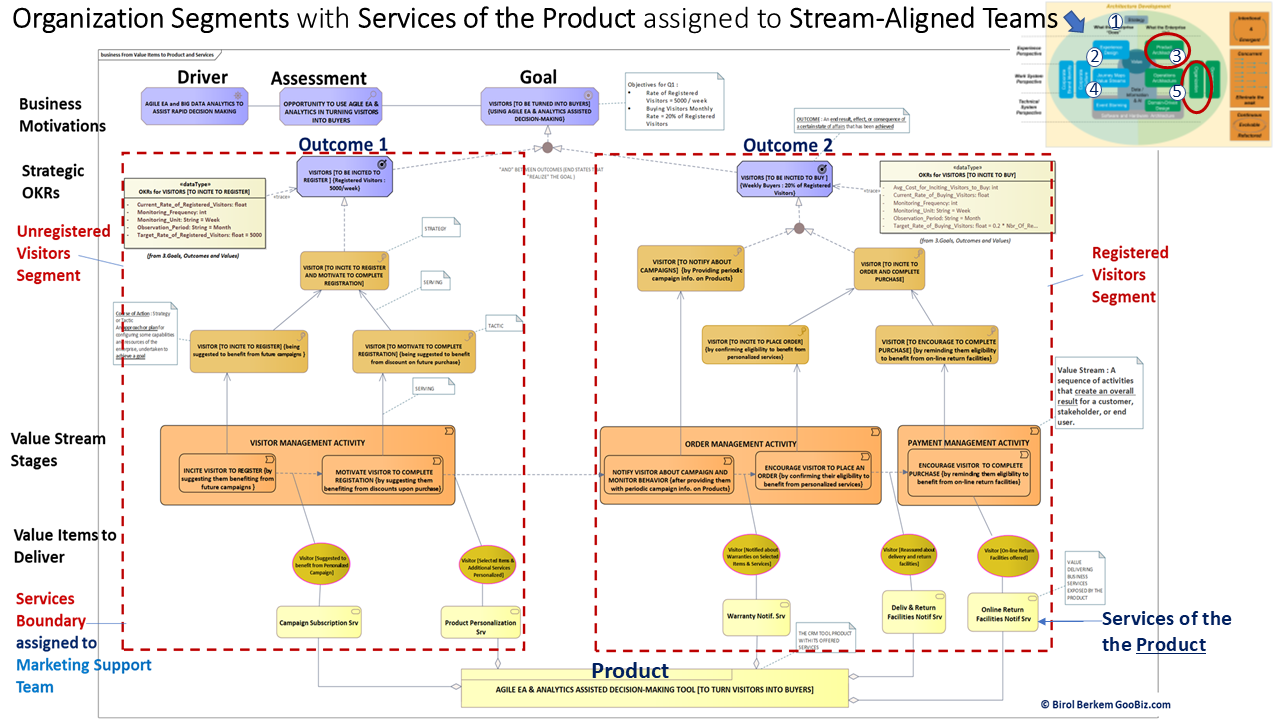
Figure 5.2 - Assignment of Service Segment boundaries to Stream-Aligned Teams
Phases B / C / D : Develop the Product and Service Architectures that are produced and operated by the Operation Architecture based on Strategic Capabilities directed by ‘Value Streams’.
In this perspective, the ArchiMate layered view ensures mapping of functional elements to technological and physical ones as depicted on the right lower corner of figure 4.
Implementing business capabilities in Phases B, C and D
While in Phase B of TOGAF ADM, the Visitor Management and Sales Support sub-domains are confirmed, in phase C the solution space corresponds to implementations of these business capabilities. Thus, solution space implementations of these business capabilities will focus on the software entities and relationships.
Indeed, within the solution space the software architecture is described through "bounded contexts" that are used to manage the complexity being linked to the business.
Software Bounded Contexts and Measure of Performance
Minimal entities and relationships within bounded contexts and their attributes can be precisely discovered on the basis of the capabilities and data that need to flow within and between processes.
In addition, such attribute values at run-time help to measure progress along end-to-end processes that realize the value streams.
The figure below depicts some of these contextual entities with their attributes discovered being based on the context brought by the corresponding data flows within capabilities depicted above.
The Sales Engagement and Sales Support bounded contexts provide a set of business entities and their relationships to incite visitors to buy then encourage them to complete their purchase being aligned with Outcome 2.
These bounded contexts can be assigned to dedicated teams such as Sale Engagement team 1 to 'Incite Visitor to buy' and Sale Support team 2 to 'Encouraging Visitor to Complete Purchase' by reducing their dependencies.
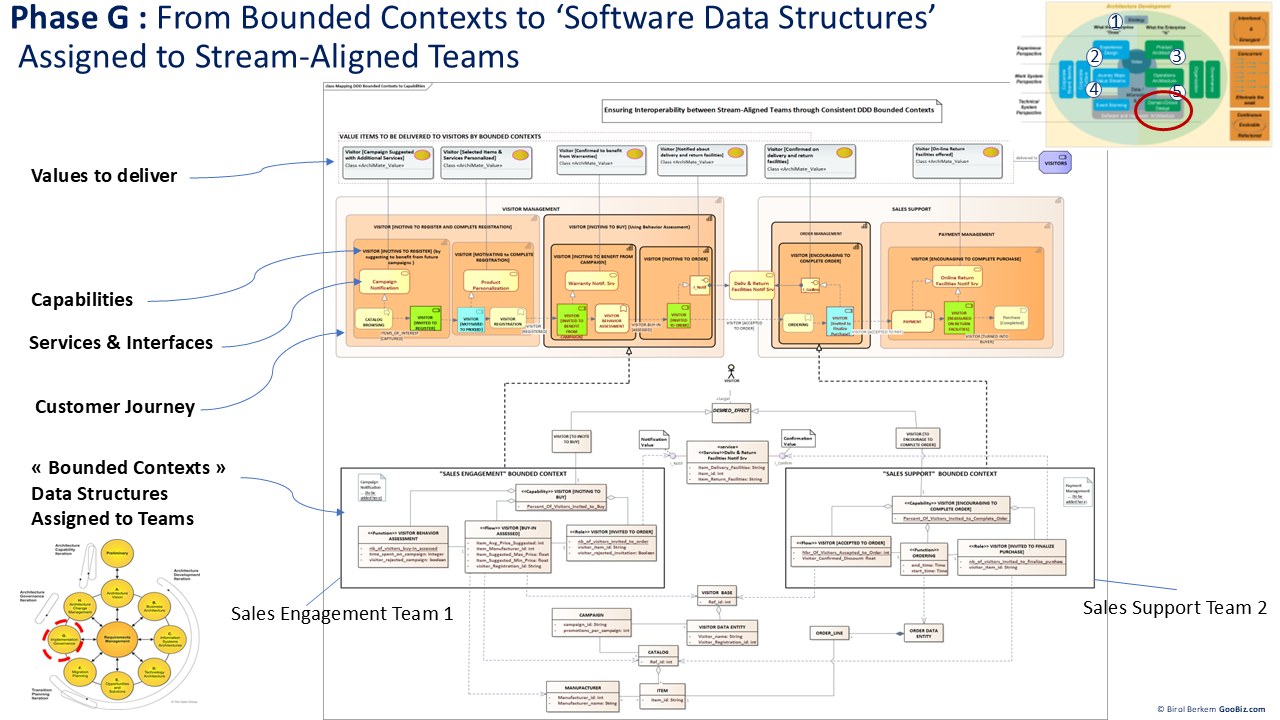
Figure 5.3 - From Value-Driven Strategic Capabilities to Sales Engagement and Support Bounded Contexts respectively assigned to Team 1 and 2
Phases E / F : Capabilities and assigned Resources of Product and Operations Architectures are planned for continuously enhanced incremental delivery as depicted on the bottom part of figure 4.
Phase G : Services of the Product Architecture are developed by defining the Operational Context within which User Stories deliver Desired Values defined thru Values Items.
Run time Information that need to be delivered to Consumers at each Step of the Customer Journey (CJ) is described using State-Based Data-Types.
Instances of the data-types depicted on the top of the figure below helps to capture consumer feed-backs to enhance Value Delivery in the corresponding Steps of the CJ (cf. Phase H).

Figure 6 - Making the bridge from Strategy Aligned Roles in the Customer Journey to Value Items that have to be appropriately delivered via 'Strategy Aligned High Priority User Stories'
Phase H : Change is managed through 'Objectives and Key Result (OKR) based Data Feedbacks' captured at runtime from all drivers.
As depicted in figures 3 and 4, data feedbacks captured from drivers at run-time are assessed to adjust strategies and values.
In this perspective, figure 7 below shows how such feed-backs received from CJ Steps might be assessed by 'Actionable Value Structures' that were awaiting such data in order to be activated.
In the example in (# 0), once Data Attributes (*) for top level ‘Strategic Elements’ are set according to their « to be state », they are made ‘Actionable’, i.e they start to ‘await data’ for these attributes to assist consistent strategy execution and decision-making.
In this perspective, data needed for attributes such as Items_Market_Perf_Level and Additional_Services_Ratings of the top level 'Actionable Value' might be captured by the Catalog Browsing process (#1). These are provided respectively through Personalized Products and Localized Services attributes brought by the data type located on the bottom left corner.
Then such a data collection permits to activate the underlying Value Structure Visitor [To be Confirmed of benefiting of best scored Items] by creating a link in the database between the Visitor object and Catalog Items that respect such conditions. This helps to provide the Visitor with items that better satisfy expectations of visitors before inviting them to order at the process level (#3).
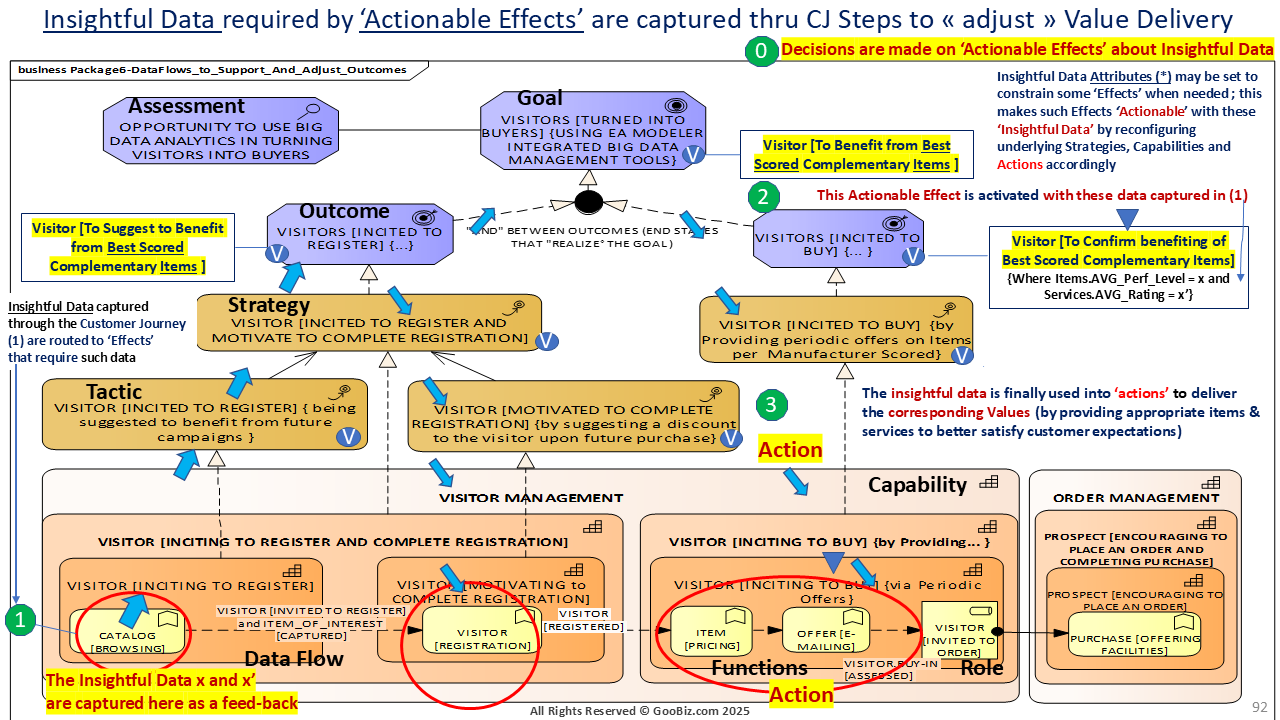
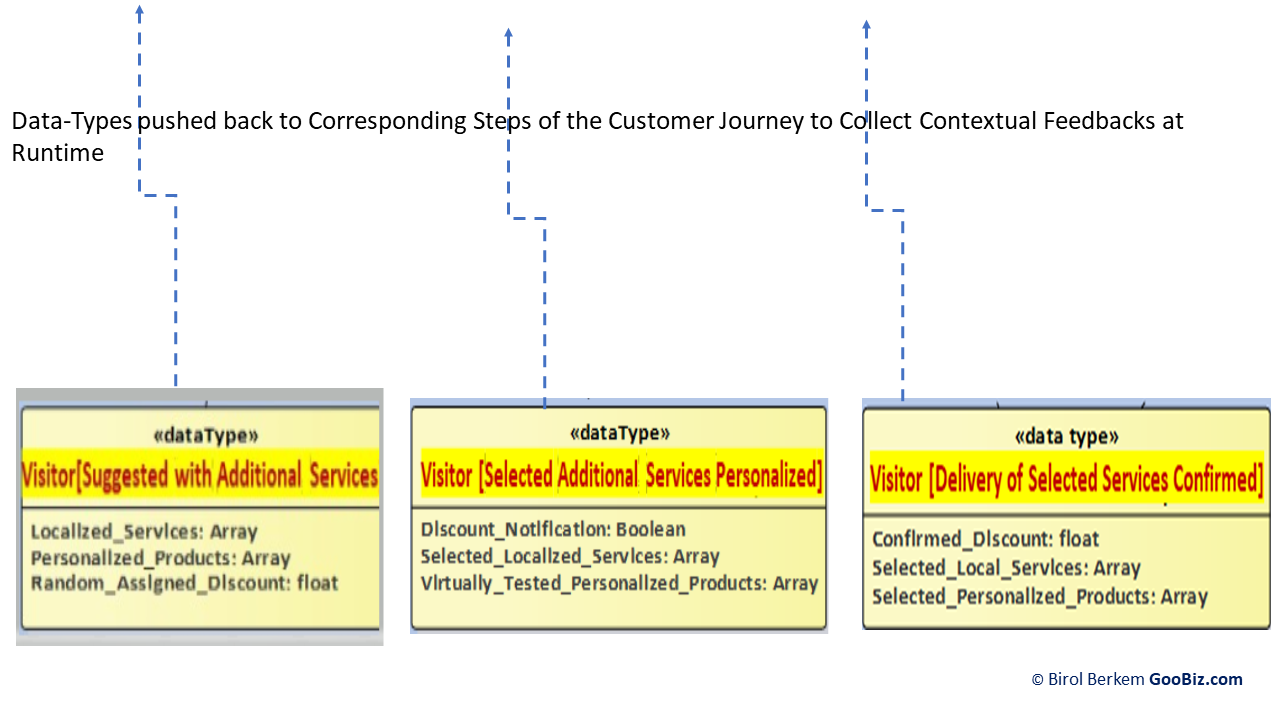
Figure 7 - Instances of Value Data Types based on Strategic Value to reach (in # 0) are “captured” from the Steps of the Customer Journey (in # 1) at run time to assist decision-making (# 0) on Strategic Value Adjustments and execution ( # 3 in blue).
Useful References :
[Brent Dykes 2016] "Actionable Insights: The Missing Link Between Data And Business Value "
[Birol Berkem – 2022a] Putting into Practice the 'Strategic and Data-Driven Agile Value Delivery' thru Digital Innovation Dimensions
[Birol Berkem – 2022b] Making the Agile Value Driven Architecture Actionable From Goals to Actionable Insights
[O-AA 2021] :Value-Driven Agile Approach
https://pubs.opengroup.org/architecture/o-aa-standard/architecture-development.html
https://pubs.opengroup.org/architecture/o-aa-standard/bb-overview.html
Birol Berkem, Ph.D - GooBiz - Paris, Last updated 2024 February 5th
#businessmodelinnovation #valuecreation #digitaltransformation

